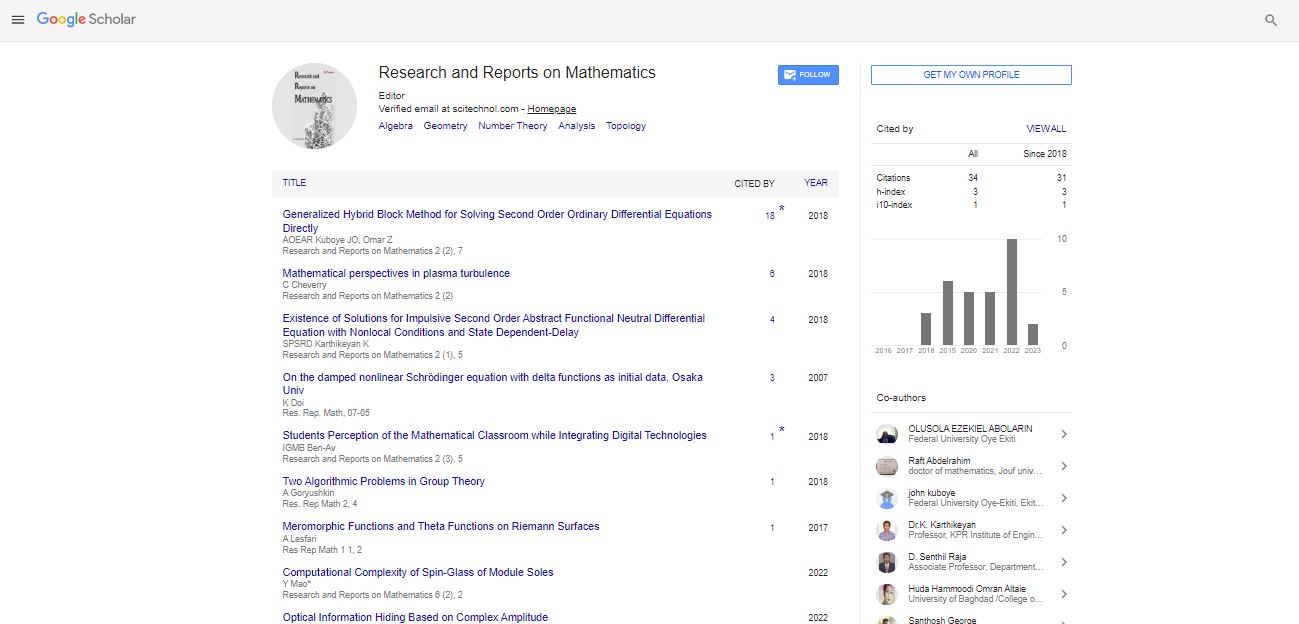Perspective, Res Rep Math Vol: 5 Issue: 8
Reasoning in Complex Networks: The Role of Symmetry and the Applicability of Images
Martin Vaquer*
Department of mathematics, University of Evora, Portugal
*Corresponding Author:
Martin-Vaquero
Department Of Statistics, University of Evora, Portugal
E-mail: Martinvaquerogmail.com
Received Date: August 06, 2021; Accepted Date: August 20, 2021; Published Date: August 27, 2021
Citation: Vaquer M (2021) Reasoning in Complex Networks: The Role of Symmetry and the Applicability of Images. Res Rep Math 5:8. 123.
Copyright: © All articles published in Research and Reports on Mathematics are the property of SciTechnol, and is protected by copyright laws.
Keywords: decompose,important hubs, connectors, routes, modules
Perspective
Symmetry is a mathematical concept that has only been partially explored in the web, especially at the application level. One reason is the lack of interpretable reasoning obtained from the network. Although the system network associations (links) between entities (nodes) originate from the underlying dependency structure, the latter is only partially explicit through established direct interactors, and to some extent is still latent (remote node predicted route). The verifiability of important hubs, connectors, routes, and modules allows the construction of a useful knowledge base to infer delays and/or verify complex associations. When looking for symmetry in an image, reflection, translation, and rotation are applicable transformations in the n-dimensional Euclidean space pointed to by the calculation algorithm. When the original image and the converted image cannot be distinguished, there is symmetry. Once put together, such transformations form an automorphism group, indicating a stable and robust global characteristic. It is very common to make inferences from images to quantifiable characteristics. Deep learning is often used to classify complete reconstructed images from the myriad features that decompose these images. However, when considering images at multiple scales and locations, symmetry is valuable in describing local features. Local characteristics are projected into the framework of the network and their association can be explored using criteria of similarity or difference. This is very interesting because the network configuration can display topological characteristics and connection patterns related to synchronization and symmetry, thus reducing feature redundancy to a more compact functional description. Then, by identifying anomalies of abnormal events, behaviors, and patterns, you will find signs of network vulnerabilities and symmetry gaps.
We reserve the last point of discussion. Anomaly identification from abnormal events, behaviors, and patterns can be used to discover network vulnerabilities and can reveal symmetry corruption. In contrast, the control of large complex dynamic networks may depend on the identification of a few nodes or input modules. Our results show that the optimized uncertainty threshold applied to the prediction of the BERT model is expected to expand the upgrade problem in the implementation of task-oriented chatbots, and the state-of-the-art deep learning architecture provides high classification accuracy in a large number of attempts. Another feature we provide is to apply BERT embedding as a language model to automatically correct small spelling errors in noisy entries. We have shown its effectiveness in reducing intent classification errors. The entire end-to-end dialogue artificial intelligence system, including the two machine learning models introduced in this article, was developed using open source tools and implemented as an internal solution. We believe these discussions provide useful guidance for companies that are motivated to reduce vendor dependency by leveraging next-generation open source AI solutions in their businesses.
We will continue to explore in this direction, paying particular attention to the following topics:
1) The current fine tuning and learning of the decision threshold are two independent parts, and we will explore the possibility of combining them as a new cost function in the BERT model. improvement.
2) The Dropout method used in our article is a rough reasoning method, which is a rough approximation of precise post-learning in parameter space. We are interested in the Bayesian version of BERT, which requires a new architecture based on variational inference using tools like TFP Tensor Flow Probability.
3) Maintaining the chat bot production system requires a complex process to continually transfer and integrate functions from the deployed model to the new version to meet new business needs, which is an unknown area for all of us.
4) It is very important for us to prepare for customer self-service by combining the latest advances in “chat” robots, using deep neural models and task-oriented machine learning models.
 Spanish
Spanish  Chinese
Chinese  Russian
Russian  German
German  French
French  Japanese
Japanese  Portuguese
Portuguese  Hindi
Hindi 